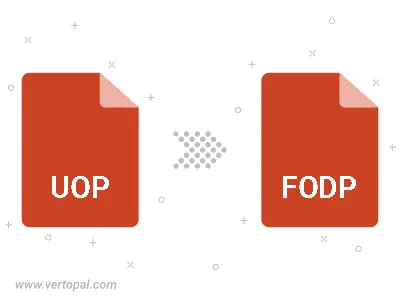Convert UOP to FODP
Convert UOP presentation documents to FODP format, edit and optimize documents online and free.

The UOP file extension stands for Uniform Office Presentation, an open document format developed for Chinese office productivity applications. It uses XML to describe presentations and stores them as compressed archives, similar to the OpenDocument format. UOP files are primarily used with OpenOffice Impress for creating and viewing presentations. Historically, the format was created to support Chinese language office applications and has been adopted by various office suites.
The FODP file extension stands for OpenDocument Flat XML Presentation. It is used for creating, editing, and storing presentation documents in a simplified XML format, ensuring compatibility with a wide range of office suites and applications. Developed as part of the OpenDocument standard by the Organization for the Advancement of Structured Information Standards (OASIS), FODP files facilitate seamless data exchange and interoperability across different software platforms, providing a versatile solution for presentation file management in professional IT environments.
Choose the UOP presentation document you wish to convert.
Check the file preview quickly and use UOP to FODP tools if you need to change the conversion settings.
Wait a couple of seconds for the converter to do the hard job, then download your FODP file.

To change UOP format to FODP, upload your UOP file to proceed to the preview page. Use any available tools if you want to edit and manipulate your UOP file. Click on the convert button and wait for the convert to complete. Download the converted FODP file afterward.
Follow steps below if you have installed Vertopal CLI on your macOS system.
cd to UOP file location or include path to your input file.Follow steps below if you have installed Vertopal CLI on your Windows system.
cd to UOP file location or include path to your input file.Follow steps below if you have installed Vertopal CLI on your Linux system.
cd to UOP file location or include path to your input file.